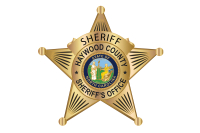Watching grief from across the street
 By Melanie Threlkeld McConnell • Guest Columnist
By Melanie Threlkeld McConnell • Guest Columnist
He usually arrives in the late afternoon, always before dinner time, and he doesn’t stay more than 30 minutes or so. Sometimes I see him arriving, sometimes leaving, his old maroon Oldsmobile crawling along Shelton Street. If I’m out walking, he always waves when he sees me. I wave back. We smile.
But mostly I see him when he is parked, his car pulled over just enough so others can pass, always next to the same row of graves on the Veterans Drive side of Greenhill Cemetery, across the street from where I live. For several years now, I have witnessed this man, likely in his 80s, sitting alone in his car, always at the same spot. Who does he visit? A late wife? A brother or sister? A child? We have never spoken, nor do I know his name, but his vigil speaks volumes. And his isn’t the only one.
Living across the street from a cemetery is not as ghoulish as some may think. The neighbors are quiet, goes the old joke in our neighborhood. And if we’re lucky, goes the other, we won’t have to leave the neighborhood when we die. And with a nursing home just two doors … well, it’s the perfect triumvirate. Yuk, yuk, my husband and I laugh. We’ve heard them all.
Mostly, though, by living here I witness grief, but not in its rawest form. For more than 13 years now I’ve watched the ebb and flow of visitors move through this historic Haywood County resting place, home to, among others, Confederate and Union soldiers, 1934 Pulitzer Prize winner Caroline Miller, Academy Award winner Gig Young, William Holland Thomas, the only white man to serve as principal chief of the Cherokee Indians, and most recently Gen. Carl E. Mundy Jr., commandant of the United States Marine Corp, who was buried with full military honors in an impressive and moving ceremony we watched with hundreds of others on a gray, rainy day.
And mostly it’s the headstones of the everyman and everywoman that move me, where their loved-one’s grief is played out — or not — especially on Mother’s Day or Father’s Day or Easter, when the cemetery is full of people, walking among the headstones, replacing old flowers with new ones, saying hello and good-bye all at once, reliving regrets and searching for comfort from a long-ago touch.
Related Items
For several years, stuffed animals, balloons and toy cars adorned one infant’s headstone, while another, just a few feet away, was visited by a group of bikers, who would rumble up Shelton Street every so often, then turn, single file, on to Veterans Drive and stop, silencing their machines, to sit quietly at the grave of one of their own. We even witnessed a fife and drum corps — a group of re-enactors dressed in period clothing — once march from the Shelton House to the top of the cemetery, to pay salute to the Civil War soldiers buried up there. The solemnity of that simple procession, its cadence echoing through the neighborhood, left my family and I humbled and remembering.
Still other gravesites are adorned with bird houses, flowering trees, plants, flags or solar lanterns — which manipulate the darkness with their unnerving blueish light — all symbols to some degree of the still-living’s continuous presence even after their loved-one’s death. But most gravesites aren’t decorated, and many lie bare and quiet, as if they’ve run their course, ready to fade into oblivion like so many gravesites eventually do.
Watching the rhythms and rituals of a cemetery and its visitors stirs up consideration for my own grief — mother, grandmother, dear friends and relatives, failed pregnancies — and nudges me toward guilt for living so far away. No fresh flowers, no Mother’s Day pilgrimages. So maybe it’s no coincidence I live where I do, that just maybe I’m supposed to see what I see.
I think of my gravesite visitor who always comes alone. Is that by choice or is there no one else? I hope he knows I know what he is doing, that I recognize the value he has placed on someone’s life. But my heart hurts just a bit when I wonder: will anyone do the same for him when he is gone?
(Melanie Threlkeld McConnell lives in Waynesville and is a journalist by training.)









